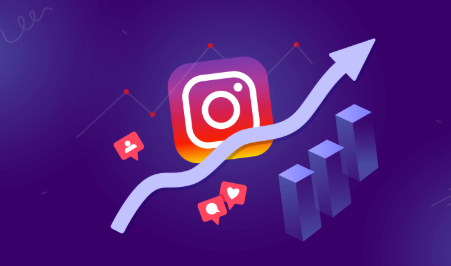Instagram has evolved dramatically since its early years. With over two billion active users worldwide, the battle for attention is tougher than ever in 2025. Likes, comments, and shares remain the currency of visibility, and many creators are tempted to use shortcuts like automated Instagram likes to boost their numbers. But with Instagram’s increasingly strict policies and smarter algorithms, the question remains: are auto likes still safe—or do they pose more risks than benefits?
What Are Automated Instagram Likes?
At its core, automated Instagram likes are services that deliver likes to your posts as soon as you publish them. Instead of waiting for organic engagement, these tools simulate instant popularity. Some platforms claim to provide likes from “real” accounts, while others rely on bots or inactive profiles. The idea is simple: the more likes a post gets in the first minutes, the more the algorithm will push it to other users’ feeds and the Explore page.
While the concept sounds appealing, its long-term value and safety are hotly debated.
Why People Use Auto Likes
The appeal of auto likes hasn’t gone away, even in 2025. Small businesses, influencers, and personal brands often feel pressured to show high engagement to appear credible. Early likes can act as “social proof,” convincing new viewers that the content is worth their attention.
In fact, industry-backed auto-like trends highlighted by BusinessWorld show that many marketers consider auto likes part of a modern growth hack. By generating engagement quickly, brands believe they can improve their chances of organic reach and even land collaborations. For startups or creators trying to break through, auto likes can feel like a ticket to visibility in a crowded marketplace.
Data from India: Auto Likes vs Manual Growth
The debate isn’t just theoretical. A recent data snapshot from TribuneIndia compared auto likes with manual growth across Indian markets. The findings shed light on both benefits and drawbacks:
- Auto Likes: Deliver sharp, fast spikes in engagement, making posts appear popular within minutes. However, the growth tends to plateau quickly. Without additional organic interactions like comments or shares, the algorithm often reduces visibility after the initial boost.
- Manual Growth: Slower and more effort-driven, but leads to higher retention, authentic interactions, and stronger conversion rates. Users who grow organically tend to build loyal communities that engage beyond likes.
This data reinforces a common theme: auto likes can create temporary visibility, but sustainable growth depends on genuine connections and content quality.
The Risks of Auto Likes in 2025
Despite their appeal, auto likes carry significant risks today:
- Algorithmic Detection
Instagram has invested heavily in detecting inauthentic behavior. Accounts using suspicious like patterns risk shadowbans, reach reductions, or even suspensions. - Shallow Engagement
Likes alone are no longer the main currency. The algorithm now weighs comments, saves, shares, and viewing time more heavily. If your content has hundreds of likes but very few meaningful interactions, Instagram may flag it as low-value. - Brand Trust Issues
Collaborators and savvy followers can spot inflated numbers. If your likes don’t match your follower base or comment activity, you may come across as inauthentic. - Weak ROI
Auto likes rarely convert into website clicks, purchases, or long-term followers. Many businesses find that the cost of these services outweighs the benefits. - Security Concerns
Some auto-like providers ask for account access or use risky delivery methods. Sharing credentials or working with unverified platforms can compromise your account.
When Auto Likes Might Still Work
That doesn’t mean auto likes have no place. Used cautiously, they may still be useful in certain situations:
- Product Launches or Campaigns: For creating buzz around time-sensitive posts.
- New Accounts: To appear more established in the first months of growth.
- Supporting Organic Efforts: When combined with real engagement strategies like content marketing, influencer collaborations, and targeted ads.
The key is moderation. Small bursts of auto likes blended with real engagement strategies are less likely to trigger penalties.
Industry Perspective
Marketers are split. Some see auto likes as a harmless push that helps newer creators, while others argue they damage credibility in the long run. The growing emphasis on industry-backed auto-like trends reflects a shift: rather than chasing vanity metrics, brands are using auto likes strategically alongside authentic community-building.
However, the consensus from studies like the data snapshot from TribuneIndia is clear: auto likes cannot replace the value of organic growth. They can be a tool, but not the foundation of a growth strategy.
Best Practices If You Use Auto Likes
If you decide to experiment with auto likes in 2025, follow these best practices to minimize risk:
- Choose Reputable Providers: Work only with platforms that use real accounts and don’t require your password.
- Limit the Volume: Avoid unnatural spikes in likes that don’t match your typical activity.
- Mix With Real Engagement: Encourage comments, shares, and saves to balance out the metrics.
- Track Conversions: Monitor whether the likes actually lead to new followers or sales.
- Don’t Rely Solely on Auto Likes: Invest in strong content, SEO for Instagram captions, and authentic collaborations.
Final Thoughts
So, are Instagram auto likes still safe in 2025? The answer depends on how you use them.
- Safe when used cautiously: in small volumes, with reputable providers, and as a supplement to real engagement strategies.
- Risky when overused: relying solely on auto likes can damage your credibility, attract algorithmic penalties, and waste resources without delivering meaningful results.
For most brands and creators, the best path forward is to focus on long-term, authentic growth—creating quality content, building community, and using data-driven strategies. Auto likes may offer a short-term boost, but they can’t replace the power of genuine connections.


